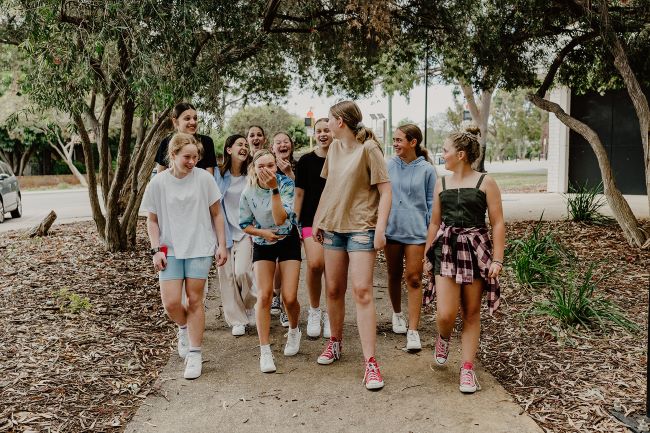Like many Australians, I fell completely and utterly in love with the Matildas during the World Cup. As a little girl who loved cricket and AFL yet had no opportunities to play in a girls’ competition, I delighted in the almost unbelievable level of respect and admiration that was showered on the Matildas from all aspects of the community and media. I felt like my heart might burst as I saw an Australian female national team elevated to levels yet to be attained by their male counterparts. The Matildas were the little girls who held tight to their dreams to play soccer and demanded a spot on boys’ teams until such time as they had their own competitions and pathways. I can only imagine the strength and determination of those girls, combined with the steadfast support and advocacy of their parents.
Upon reflecting, I feel a little sad for my lack of opportunity to play the sports I loved as a kid, but it also saddens me that no-one thought it a problem – I accepted it for what it was, and I don’t think it occurred to the clubs (which were largely run by the dads) that anything needed to change. Sisters were welcome at the games. We were just expected to watch and cheer on our brothers. No-one realised it needed to change or the potential such a change would unleash, until it did, and then it was glaringly obvious that the previous situation was a bit cruel and ridiculous.
While we are making encouraging inroads to girls’ sport, we are still yet to realise the need for change for girls in our recreational spaces.
Our facilities almost exclusively cater for boys under the guise of catering for everyone. 90% of Australian girls aged 11-17 don’t get enough physical activity for good health and a lack of girl-friendly spaces is contributing to that alarming fact. Like the Matildas-in-the-making of 15 years ago, girls who want to use recreational spaces must compete with boys, or toddlers, or dogs.
I’ll provide some context for what might sound like wild claims.

None of our local parks have netball rings. (I can only assume this is because very few boys play netball). The netball courts at school are locked after school hours (including weekend and school holidays), so two 12-year-old girls decide to use the basketball ring at the park. Two 13-year-old boys come to shoot hoops. What happens? The girls retreat. Even if these girls were basketballers rather than netballers, they would still likely retreat.
The girls move to the swings to be away from the boys and enjoy and swing and a laugh. A parent comes with their toddler. What is expected of the girls? Make way for the toddler to have a swing. Where do they go next? Most likely home. They don’t know where else to go.
A recent report out of the UK found that “most parks have more facilities for dog waste than for teenage girls.” It sounds shocking, but I don’t think it’s untrue of our local facilities. We have dog poo bins with free plastic bags, a BMX track, a toddler bike track, cricket nets, football ovals, and basketball rings in the parks in our suburb. Girls could use these at any time but realistically would only do so if no one else was there or likely to turn up while they were playing. The same report from the UK found that multi-use games areas are used by boys 92% of the time. General park and recreation facilities were used by boys 88% of the time. Where different facilities such as shelters, swings, tennis courts and play areas designed for older children were offered, girls were three times more likely to use them. The problem is that these types of facilities are rare.
When asked, the girls reported that they’d like places to sit and swing – preferably away from sporting areas. One teen noted that “if there is seating it’s designed so you can watch the boys play which is actually the thing that irritates me most, that we’re going to put the girls into a subservient place where they’re expected to spectate.” This quote took me straight back to the late 80s.
So how can we make spaces for girls? We could start by offering more variation in landscaping, sitting options (spaces to hang out and talk to each other, rather than park benches), and swings and play equipment for bigger kids that is away from little kid areas. Dare I suggest toilets? Girls need bathrooms for various purposes and don’t have the option of a discreet wee behind a tree. Most importantly, we need better engagement. Teenage girls need to be at the centre of the decision-making process to create parks and other spaces which really meet their needs.
If we can provide spaces for girls that make them feel welcome, comfortable, and safe, I have no doubt we will see more physical activity and social connection for the people in our community who need it the most – teenage girls.

